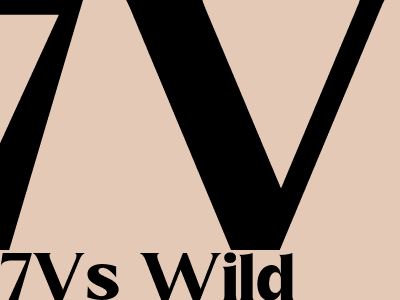7Vs Wild: A Comprehensive Guide to Wildlife Conservation
Introduction: The Importance of Wildlife Conservation
Wildlife conservation is paramount for maintaining the balance and stability of our planet. It involves protecting the diversity of plant and animal species, their habitats, and the ecological processes that sustain them. By preserving biodiversity, we safeguard ecosystem services, ensure human well-being, and preserve our natural heritage for future generations.
The Urgent Need for Conservation
Human activities pose significant threats to wildlife, including habitat loss, pollution, climate change, and exploitation. Deforestation, urbanization, and agricultural expansion are encroaching on wildlife habitats, fragmenting populations and reducing their genetic diversity. Pollution from industrial waste, agricultural runoff, and plastic debris is contaminating ecosystems and harming wildlife health. Climate change alters weather patterns, disrupts food chains, and forces species to adapt or face extinction.
The 7Vs of Wildlife Conservation
To address these challenges, a comprehensive approach to wildlife conservation is needed. The "7Vs" framework provides a multifaceted perspective on conservation:
1. Value
Recognizing the intrinsic value of wildlife, beyond their economic or utilitarian worth, is crucial. Conservation efforts should prioritize protecting species for their ecological roles, biodiversity, and aesthetic qualities.
2. Viability
Maintaining viable populations of wildlife is essential for their long-term survival. This involves ensuring sufficient genetic diversity, habitat connectivity, and access to resources to support healthy populations.
3. Vulnerability
Identifying vulnerable species and ecosystems helps prioritize conservation efforts. Species facing population declines, habitat loss, or threats from human activities require urgent attention.
4. Vision
Establishing a clear vision for wildlife conservation guides decision-making and sets conservation goals. This vision should consider both the needs of wildlife and the sustainable use of natural resources.
5. Vigor
Implementing conservation actions with vigor and determination is crucial. This includes enforcing regulations, investing in research and monitoring, and promoting public awareness.
6. Verification
Monitoring and evaluating conservation efforts are essential to assess progress, identify areas for improvement, and ensure accountability. Regular surveys and data collection help track species populations and ecosystem health.
7. Voice
Empowering local communities, indigenous peoples, and other stakeholders to have a voice in wildlife conservation is vital. Their knowledge and perspectives can contribute to effective conservation strategies.
Conclusion: A Call to Action
Wildlife conservation is a collective responsibility. By embracing the 7Vs framework, we can work together to protect the diversity of life on Earth and ensure the well-being of both wildlife and ourselves. It is time for us to prioritize conservation efforts, engage communities, and act decisively to preserve our planet's precious wildlife.

7Vs Wild

Comments